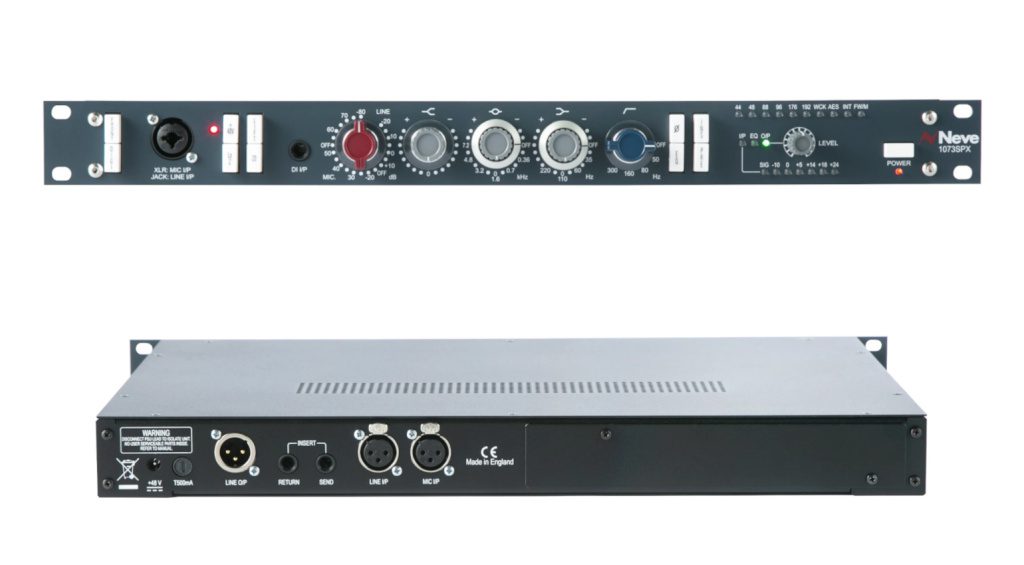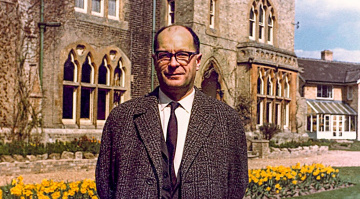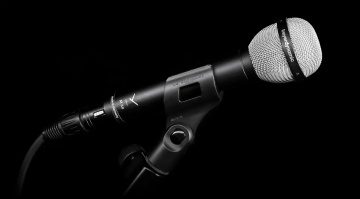The Best Vocal Chain for Rock: 5 Core Elements
Ways to get a great rock vocal sound.
What does it take to build the best vocal chain for rock recording? We find out which elements can help you produce the perfect rock vocal.
The Best Vocal Chain for Rock
Rock vocal recording is all about vibe and character, which can be reliant on tracking with the rest of the band as well as a selection of processors to tame the signal on the way in.
To build the best vocal chain for rock, we’ve selected gear that has become essential pillars of this historic sound. Whether you’re recording to tape or DAW, each element plays an important role in the recording chain.
In this Article:
The Best Vocal Chain for Rock: Dynamic or Condenser Mics?
Our choice of microphone is influenced by the style of vocals but even more so by the recording environment. Vocalists like Zach De La Rocha, Dave Gahan, and Bono are very different stylistically but were all captured on dynamic mics like the SM7 and SM58.

Meanwhile, during Tool’s Undertow sessions, Silvia Massey gave Maynard an AKG C1000 with a makeshift tape grip. This meant he could use it as a handheld mic to capture his high-SPL screams while returning to the booth’s Neumann U67 for quieter passages.
In a well-treated studio environment, you have the luxury of experimenting with a wide range of mics to find the best fit. Alternatively, in the home recording front where background noise and reflectivity can be problematic, dynamic mics are the best choice.
With the advent of podcasting and streaming, broadcast-style dynamic mics are more accessible than ever, and they are perfect for the recording of rock vocals.




The Best Vocal Chain for Rock: Neve-style Channel Strips
In the history of rock music, some of the most sought-after tones created in the recording process were done with Neve consoles. This sound comes from the unique Neve preamp design that allows you to overload the input gain to varying degrees.

By using one or a pair of 1073-style channel strips in-line, you can use the classic EQ to enrich the midrange and smooth the high-frequencies within your vocal performance. For the best results, use the EQ to further accentuate the harmonics introduced by pushing the input gain.
Naturally, the dynamics of your vocal performance will influence your decisions here. You want to ensure that you have enough headroom to create a defined contrast between your verse and chorus sections, so keep this in mind.
Furthermore, you can try using different gain and EQ settings for your lead vocal track and harmonies. However, remember to leave space for the compressor’s makeup gain, which we will get to next.






The Best Vocal Chain for Rock: 1176-style Compressors
The UREI 1176 is a legendary FET compressor used for tracking some of the greatest rock vocal performances. Without the help of threshold controls, the program-dependant design shapes the compression according to the input gain and the character of the signal.

There’s no doubt that the 1073/1176 combination is a famous cornerstone used in so many of our favourite rock recordings. However, every engineer has a slightly different philosophy on how to get a great vocal sound.
While some recommend pushing the gain of the mic preamp stage, others prefer to use the makeup gain of the 1176 to give the vocal its character. Because the 1176 can maintain the integrity of a signal with a staggering amount of gain reduction present, it’s ideal for this purpose.
Getting this balance right may take time, as it depends on the vocal and its role in the song you’re recording. With the vocal signal running through the compressor, use your ears rather than the VU meter to determine the attack and release times, as well as how much compression to use.




The Best Vocal Chain for Rock: Using the LA-2A
While the 1176 peak limiter is used for its fast transient grabbing properties, the LA-2A is inserted at the end of the recording chain to do more broad-spectrum compression, emphasizing the subtle nuances and details.

This may seem complicated, but luckily, the LA-2A is one of the easiest compressors to use. Like the 1176, the LA-2A uses a program-dependent design. However, there are two operating modes for compression and limiting.
For this application, our 1176 is already doing the job of peak limiting, so the LA-2A is set to Comp mode. From there, we only want to compress gently, with around 1-2 dB of gain reduction present.
Overall, this will smooth out the vocal bringing out the details in a pleasing way and adding character and vibe without shaping the dynamics too much.




The Best Vocal Chain for Rock: Which Reverb?
Reverb isn’t often used while tracking (besides for monitoring purposes). However, your choice of reverb is important as it can place the vocal production into a particular era. For massive Bon Jovi vocals, you’ll want a 1980s reverb like a Lexicon 224 or Yamaha REV-7 to go with that perm.

Meanwhile, more modern rock mixes require a drier, shorter, and more natural reverb sound to cut through that wall of guitars. For a more vintage sound, you can use the UAD Sound City Studios plug-in that replicates the live room of an iconic rock studio.
Otherwise, you can take a modern approach with the Sonsig Rev-A plug-in from Relab Development. A personal favourite of Joe Barresi, the Sonsig REV-A lets you dial in transparent or modulated reverb sounds in seconds.
To make your choruses stand out, try pulling your effects return faders back by 6 dB during the verses. This will give your mix even more depth, so the vocals remain focussed throughout.



More about the Best Vocal Chain for Rock:
*Note: This article about the Best Vocal Chain for Rock contains affiliate links that help us fund our site. Don’t worry: the price for you always stays the same! If you buy something through these links, we will receive a small commission. Thank you for your support!

 4,7 / 5,0 |
4,7 / 5,0 | 









